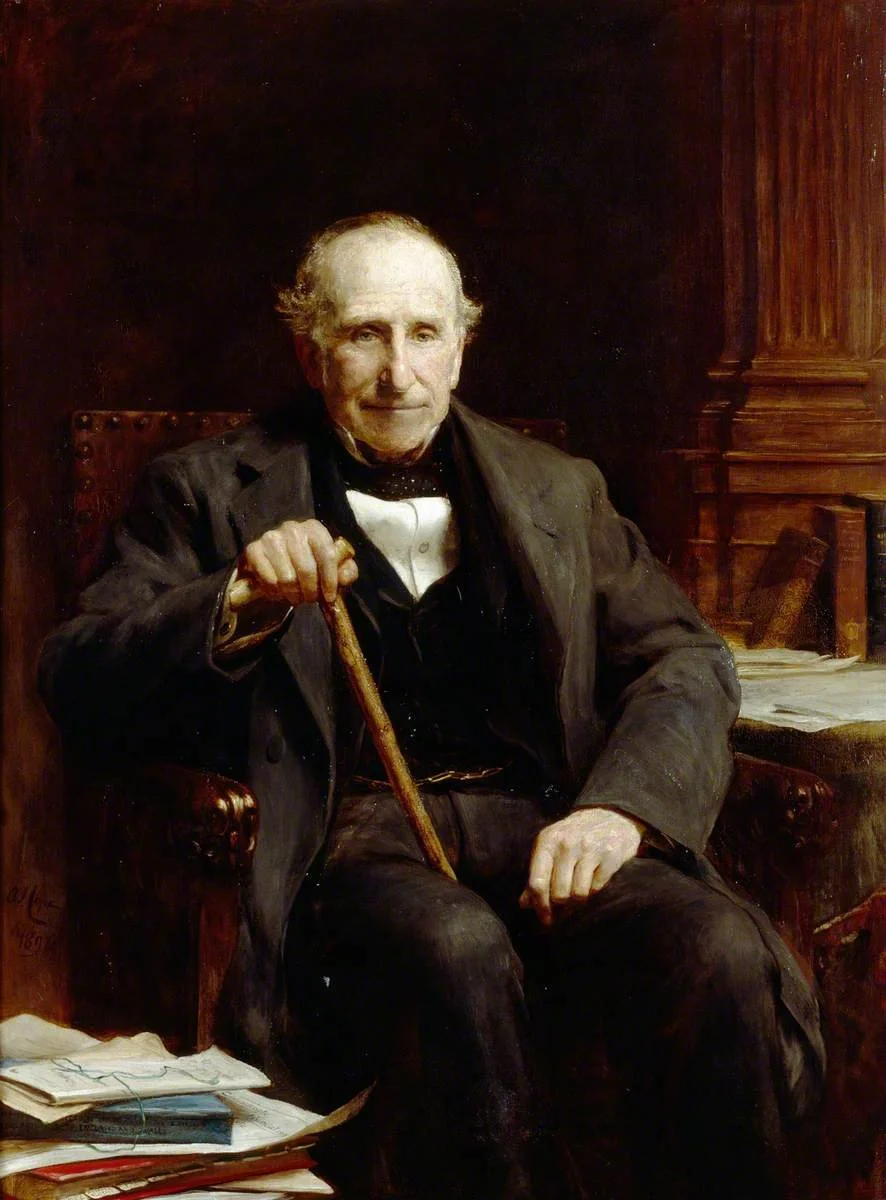History of the Foundation and schools
Central Foundation Schools of London is an educational charity established by the Reverend William Rogers in the City of London in 1863. The two schools which the Foundation supports have a rich history which intertwines with many aspects of the wider story of London’s east end and related social history.
The Reverend William Rogers (1819–1896) by Arthur Stockdale Cope. Photo credit: By permission of Dulwich Picture Gallery
Educational pioneer
The Reverend William Rogers, Rector of St. Botolph’s Church, Bishopsgate was a pioneer in children’s education and one of the great Victorian social reformers. His impact and achievements were extensive. His commitment to education and reform saw him variously open his first school for some of the city’s poorest children in a blacksmith's shed, defend secular education in the face of his own religious training, establish public water fountains and open bath houses, he was chaplain to Queen Victoria, and he impressed the bank so greatly with his commitment to his cause that they wrote off part of the debt he had incurred in his educational endeavours.
Royal commission
Social improvement lay at the heart of Rogers’ philosophy, and education was often the means to the end. During the mid- and late-1880s when education was gaining more prominence in Victorian social policy making, he opened a plethora of schools in London’s East End. Rogers was a prodigious fundraiser and well connected with Victorian England’s landed gentry to whom he turned to help him activate his plans.
In June 1858 Rogers was appointed by then Prime Minister Lord Derby as a member of the royal commission to inquire into popular education. Rogers believed that as well as a need for universal education for all children, the sons of artisans and tradesmen needed advanced tuition to prepare them for university, business and skilled professions and that it needed to be affordable for their middle class families.
Middle Class Schools
In 1866, with the assistance of the Lord Mayor of London and other wealthy patrons, Rogers set up the Middle Class School, in the City of London. The school was popular and quickly needed to be relocated to a larger site. The Cowper Street site was purchased and the foundation stone was laid by the Lord Mayor in 1868. The new school buildings were opened on 29th February 1869 though the Great Hall — an iconic part of the school architecture — was not complete until 1873.
Rogers also took over the existing charity school for girls in his parish. The original Bishopsgate Ward School in St. Botolph’s Without Bishopsgate was founded in 1726 to provide education for the children of Huguenot families who fled the religious persecutions in France and had settled in London’s East End. Fom the mid-1700s to 1772 the school was based in various locations.
In 1891 the Middle Class School took over the Bishopsgate Ward School in the City of London. A separate Girls’ School was set up in Spital Square and the boys were incorporated in the existing Boys’ School. The schools were renamed the Central Foundation Schools of London.
The Dulwich connection
Rogers was able to arrange funding for the schools by making the school a minor beneficiary of the Charity of Alleyn’s College of God’s Gift at Dulwich, which supported Dulwich College of which Rogers was a governor. This charity, which was reconstructed and renamed the Dulwich Estate, continues to provide a major source of income for the City School Foundation today.
A diverse school
In the late 1800s the schools continued to support newly arrived families. Many of the students came from Russia and Eastern European families fleeing the pogroms and religious persecution. In the 1920s and 1930s many of the students were German and Jewish whose families had fled Nazi Germany.
Twentieth century education
Both Boys’ and Girls’ Schools remained academically selective and fee paying until the 1945 Education Act which stated all schools had to be primarily state-funded or to become entirely financially independent. Central Foundation lacked sufficient financial endowment to become fully independent and in 1945 abolished fees and became state funded and subsequently voluntary-aided.
Further development for girls
In 1975 the Girls’ School moved from its very overcrowded site in Spital Square to refurbished buildings in Bow, Tower Hamlets. In 2005, the Boys’ School Sixth Form became co-educational.
The schools today
Both our schools have impressive academic outcomes and are highly rated by Ofsted. The two establishments are very popular secondary school choices and every year each has far more applications than places. 2024 sees the Girls’ School with over 1500 students on its roll while the Boys’ School welcomes over 900 students. The Boys School now welcomes girls to study at sixth form level and has around 25% female in its sixth form while the Foundation is about to embark on a major project with the Girls School to substantially extend its sixth for provision.
Today we’re proud to support two schools that continue their fine tradition of providing education for children from a huge diversity of backgrounds. Their impressive record of achievement alongside a wide ranging extra-curricular programme stands testament to the individual and collective efforts that comprise the Central Foundation Schools.

